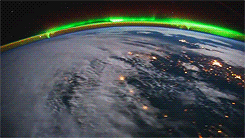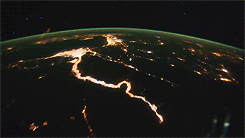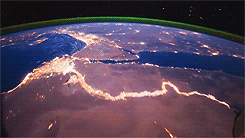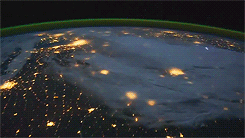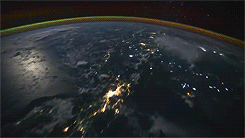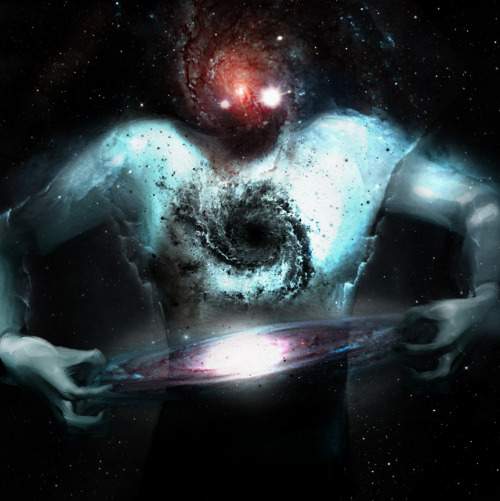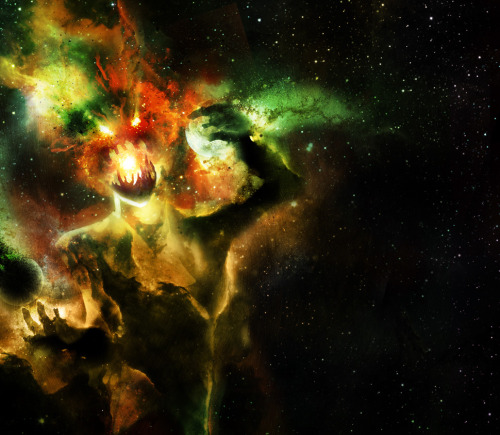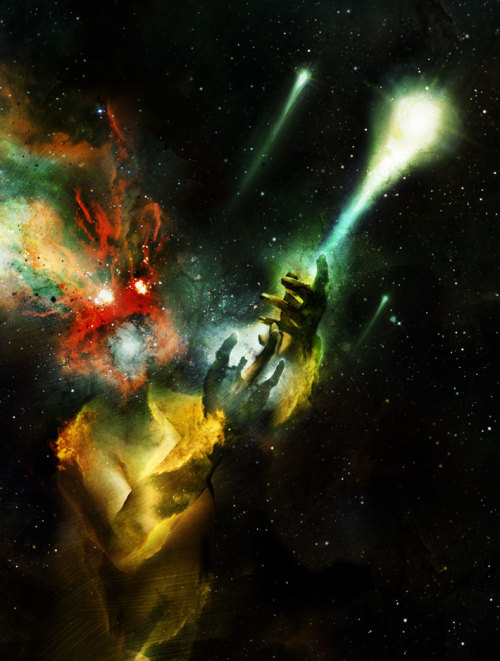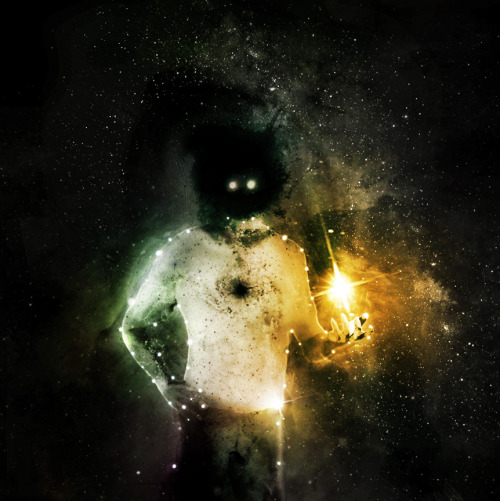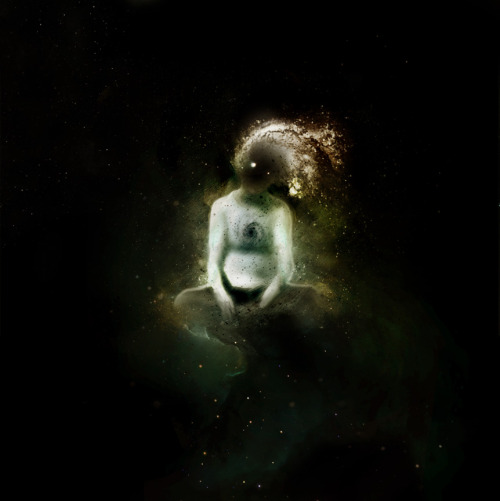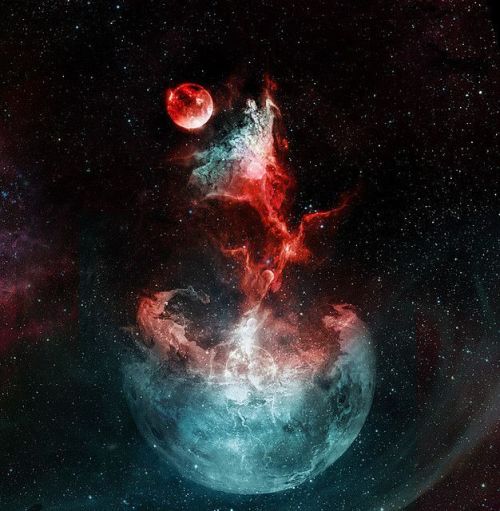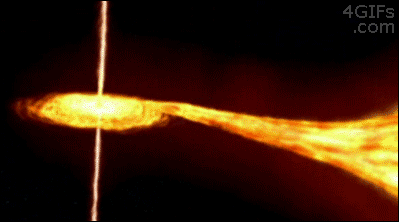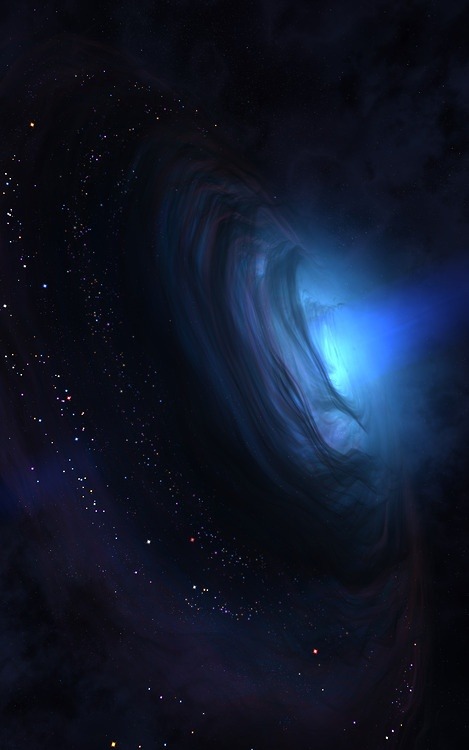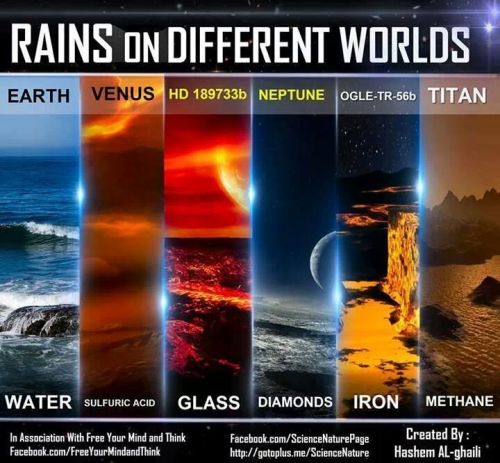A personal temporospatial claudication for Young Wizards fandom-related posts and general space nonsense.
288 posts
Latest Posts by outofambit - Page 8
If Young Wizards characters had Tumblr Blogs:
Nita: A “hipster blog” of sorts with flawless color coordination and all sorts of cheerful posts: beautiful landscapes, inspiring quotes, book reviews, and so on. The pictures of cats, whales, and birds are tagged like they’re the selfies of her close friends. Because they are.
Kit: The geekiest and most exhaustive space blog you’ll ever see. If Mars were to be blown up, it could be rebuilt with perfect accuracy with nothing but the posts about it on his blog. Also reblogs a lot of Dairine’s science-fiction-related posts, and he and Nita are one of those Cute Couples On Tumblr.
Dairine: A fandom blog devoted to Star Wars, Star Trek, and all other things science fiction. Very passionate and argumentative about everything; strongly held opinions get her into a lot of protracted Tumblr debates. Gets into arguments with Roshaun a lot, especially.
Carmela: A glorious, thoroughly disorganized mess of recipes, fashion, NSFW posts, anime, and life advice. Sends Kit a lot of deliberately weird asks.
S’reee: Friendly reblogs of her friends’ posts, interspersed with long, incomprehensible audio posts like remixed whalesong (which they are). And discussion of conservation issues.
Filif: Primarily devoted to very colorful fashion photosets, with the occasional picture of a flower tagged “nsfw.”
Sker’ret: One of those people who reblogs just about everything he comes across, with great enthusiasm. All of those legs lend themselves well to some truly epic keysmashing when he’s excited about something.
Roshaun: Exhaustingly long rants (never, ever put behind read-mores, either), occasionally interrupted by food porn posts, fashion, and impromptu lectures on stellar dynamics. And failed attempts to comprehend memes (“Imagine how is touch the sky” reduced him to nothing but rows of question marks eventually. It doesn’t translate to the Speech well).

This Is Big: Scientists Just Found Earth’s First-Cousin
Right now, 500 light years away from Earth, there’s a planet that looks a lot like our own. It is bathed in dim orangeish light, which at high noon is only as bright as the golden hour before sunset back home.
NASA scientists are calling the planet Kepler-186f, and it’s unlike anything they’ve found. The big news: Kepler-186f is the closest relative to the Earth that researchers have discovered.
It’s the first Earth-sized planet in the habitable zone of another star—the sweet spot between too-hot Mercury-like planets and too-cold Neptunes— and it is likely to give scientists their first real opportunity to seek life elsewhere in the universe. “It’s no longer in the realm of science fiction,” said Elisa Quintana, a researcher at the SETI Institute.
But if there is indeed life on Kepler-186f, it may not look like what we have here. Given the redder wavelengths of light on the planet, vegetation there would sprout in hues of yellow and orange instead of green.
Read more. [Image: NASA Ames/SETI Institute/JPL-Caltech]
Over 2 light years across and over 2000 light years away from Earth: The Ghost Nebula (Hubble)
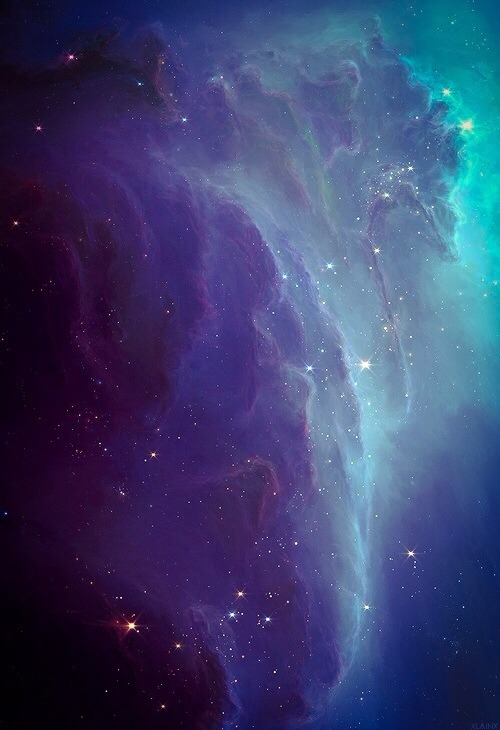
How much of YW was planned from the beginning? E.g. did you know about Bobo when you were still writing SYWTBAW?
Nope. Bobo happened along the way.
I did know from the very beginning that this was going to be a series (contrary to some people’s beliefs, especially the ones who consider the closure at the end of High Wizardry very complete). But initially I wasn’t sure where I was going with it except in very general terms. By the end of Deep Wizardry, though, I was starting to get some ideas of some things that were going to have to happen, and of how much further this could go if I got lucky and the sales were good enough to keep me at the same publisher. …But then the publisher (Dell) changed hands (managerially) and “changed directions”, as they like to say, and just after I turned in High Wizardry they started the process of offloading all their midlist authors and concentrating their attention and promotion on their bestselling writers. (In the process, for example, throwing Jane Yolen overboard. How stupid can you get?)
There has never been any overarching blueprint or master outline. But as I was working on HW I started to see the path ahead much more clearly. (Which got kind of frustrating when Dell dumped me; A Wizard Abroad wound up being published first in the UK, by Transworld / Corgi, and then by the SF Book Club, before Jane went on to wrangle the new YA imprint at Harcourt and bring me aboard). While I was working on Abroad I already knew that the events of The Wizard’s Dilemma would have to happen, and could see the difficulties that would come of them; and while I was working on Dilemma, the arc that kicks off in Holiday solidified a lot further. And so forth. This is the way it always seems to go in this series: things build and develop in three- or four-book stages, pulling in data from earlier books and making more sense of them in the overall picture.
Yet it would also be true to say that one specific issue-arc that launched in SYWTBAW has not yet paid off, has been more or less constantly on my mind since 1983, and will finally start its resolution in book 11. And whatever you’re thinking it is, I guarantee you that’s not what I have in mind. Seriously: this particular thing, no one will have seen coming. Promise.
There… that should make everybody crazy enough for one day.

On Wednesday February 26th, NASA’s Kepler mission announced the discovery of 715 new planets. These newly-verified planets orbit 305 stars, many have multiple-planet systems like our own. Interestingly, 95% of these planets are smaller than Neptune in size, which is 24,622 km in radius (15,299 miles). NASA states that this discovery marks a significant increase in the number of known small-sized planets more akin to Earth than previously identified planets.
Since the first discovery of a planet outside our Solar System was made two decades ago, Kepler has been able to speed up the process of confirming planets. These multiple planet systems are important for scientists to study because they are fertile grounds that give us clues on planet formation. Four of these confirmed planets are 2.5 times the size of Earth and they lie within the habitable zone. The possibilities seem endless on what may lie on these planets or what life could exist there.
Without doubling NASA’s budget it’ll take us a lot longer to answer the age-old question, “Are we alone in the Universe?” Let’s take action today and help NASA double their budget. penny4nasa.org/take-action/






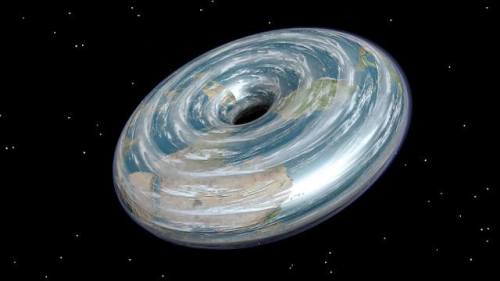
According to the laws of physics, a planet in the shape of a doughnut (toroid) could exist. Physicist Anders Sandberg says that such planets would have very short nights and days, an arid outer equator, twilight polar regions, moons in strange orbits and regions with very different gravity and seasons.
Read more: http://bit.ly/1kPLXGT via io9

Cosmic Dance: Creation of Supermassive Black Holes
Evolution of two equal sized galaxies colliding and forming a massive cloud of gas that will collapse into black hole.
Credit: Ohio State University
I have this weird theory that some people are drawn to each other because their atoms were near each other when the universe was created and over time the same atoms keep coming back together

Finally! A black hole that you can visit and survive!
Want a trip through a black hole without having to experience that pesky death? You’re in luck. There’s a special kind of black hole that’s not just survivable, but might get you to another time, or another universe.
Black holes are, traditionally, the scariest things in the universe. Huge, mysterious, inescapable, they wander through the universe and eat everything that gets too close. “Too close” is defined by their event horizon. This is the point at which they go dark, because it requires so much energy to escape them that not even light can get away. Since not even a photon can cross the barrier, no event that happens inside the horizon can ever have an effect on people outside.
Unless, something very odd was going on in the center of the black hole. Most black holes spin - this is something that was discovered way back in the 1960s by physicist Roy Kerr. It wasn’t exactly a shock, because most of the material that collapses into a black hole was already spinning. Sometimes, however, the spin on Kerr black holes goes a little above and beyond. Ever spun a glass of water, or soda bottle, so that the liquid inside swirls? Sometimes, if you spin it enough, the liquid actually parts, leaving a clear center and a spinning ring of water around it. The same kind of thing can happen in Kerr black holes. Instead of a singularity at the center, there’s a ring. And you can go through the open portion of that ring without touching the gravitational crush.
What’s on the other side? A lot of people have wondered. Some people think that these kind of black holes might be our key to time travel. They might be wormholes that let us hop between different points of the universe. Or they might be portals to different universes entirely. First we’ll have to find a few, and then we’ll need a few volunteers to go through. Preferably ones that haven’t seen Event Horizon.
Top Image: NASA/JPL-Caltech
Second Image: Dana Berry/NASA
Via NASA, Astrophysics Spectator, Discovery.




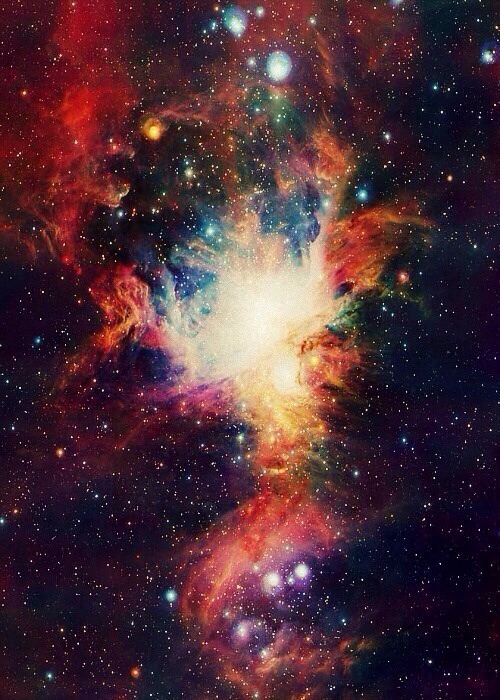


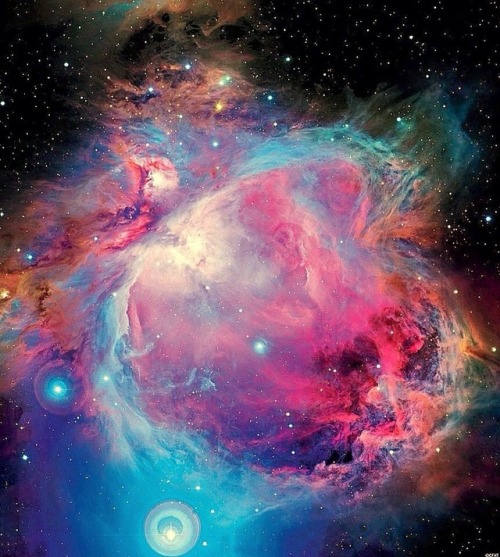


Space, guys… SPACE!!!!
The Wizards' Oath changes from novel to novel in the Young Wizards series. Do you think you'll ever have a final version of it, or do you see the Oath continuing to grow and change for as long as the series continues?
There won’t ever be a “final” version, no. Whenever the series ends (or its author does), there will always be an understanding that there would always have been versions of the Oath we’d simply never see (or have time to see).
It’s not so much an issue of the Oath itself changing. At the start of a wizardly career, it’s offered to each probationer in the form that will best express to them what their responsibility to the Universe, the One and the Powers that Be is going to look like, at least at the outset. It tends to be simple and clear to start with: people need to be certain about what they’re signing up for. But afterwards, Oaths can change and become more complex as their users change, and as their understandings of that responsibility grow.
There are versions of the Oath that have become very popular across cultures, across regions of a world, or sometimes even planet-wide or further, depending on the species. But everyone understands that each wizard has the right to restate the Oath for himself/herself/itself/whatevergenderself so that it best expresses that responsibility to minimize the growth / effects of entropy, including the most basic strictures: don’t end life if you can avoid it, don’t handle finite resources thoughtlessly, don’t interfere in working systems unless the system itself is under significant threat, don’t change things without permission / fix what’s not broken (a dual simplification/restatement of the Troptic Stipulation: see Tom’s discussion of it and other aspects of the Oath here).
But outside of that, there’s room for considerable elaboration. Some wizards over time evolve personal recensions of the Oath that are quite long. In fact mention is made in future-canon of a species somewhere a long way off whose entire wizardly practice consists in recitation of the Oath in one of its most involved and complex forms. They spend their whole lives, these wizards, in an ecstasy of expression that we’re not remotely equipped to understand… continually reminding the Universe how it’s meant to be cared for. They don’t actually do anything — or so it would seem to us at first (or second or tenth) glance. But our perception of the never-ending intervention that is their lives is necessarily limited by the (all-too-)human perception that to matter, you have to be doing stuff. As their species reckons things, they are the most recklessly active and adventurous wizards extant. And who are we to judge them as being otherwise?
The above is just one of many worlds or other kinds of places (I think this gets mentioned in AWoM somewhere) where, in this mode or others, the Oath appears in forms that would make no sense whatsoever to a human. Yet these still fruitfully express the relationships of the species in question with the Powers and with the Universe they’re helping to take care of. And even when using what we consider one of the conventional local wordings, inside a human wizard’s head — over the course of their practice — images and concepts get attached to the mere words that are evocative of the interventions you’ve participated in, the lives you’ve saved, the friends you’ve lost, the causes you’ve won. In fact you could probably make a case that no matter how many times you repeat the words, even if they’re the same words, it is impossible for you ever to speak the same Oath twice. You are not the wizard you were a year ago, or three, or ten: or an hour ago, or five minutes back. You are in constant change, as is the Universe you serve (since you’re stuck inside Time together). Your work in that Universe changes you further, and your constant commitment and re-commitment — as itself manifested in the Oath — changes you further still. It’s all flux, from a wizard’s first breath to the last: and that’s as it should be.
So, no… no “final” versions of the Oath: not until the last quartz molecule stops vibrating. By which time, it’ll no longer be any problem of mine. :)




Mind-Blowing Beauty of Mars’ Dunes: HiRISE Photos
Mars plays host to a huge number of dune fields — regions where fine wind-blown material gets deposited to form arguably some of the most beautiful dunes that can be found on any planetary body in the solar system. Using the powerful High-Resolution Imaging Science Experiment (HiRISE) camera on board NASA’s Mars Reconnaissance Orbiter, planetary scientists have an orbital view on these features that aid our understanding of aeolian (wind-formed) processes and Martian geology. Here are some of our favorite Mars dunes as seen by HiRISE.

Scale of Universe Measured with 1-Percent Accuracy
An ultraprecise new galaxy map is shedding light on the properties of dark energy, the mysterious force thought to be responsible for the universe’s accelerating expansion.
Image: An artist’s concept of the latest, highly accurate measurement of the universe from the Baryon Oscillation Spectroscopic Survey. The spheres show the current size of the “baryon acoustic oscillations” (BAOs) from the early universe, which have helped to set the distribution of galaxies that we see in the universe today. BAOs can be used as a “standard ruler” (white line) to measure the distances to all the galaxies in the universe. Credit: Zosia Rostomian, Lawrence Berkeley National Laboratory
A team of researchers working with the Baryon Oscillation Spectroscopic Survey (BOSS) has determined the distances to galaxies more than 6 billion light-years away to within 1 percent accuracy — an unprecedented measurement.
"There are not many things in our daily lives that we know to 1-percent accuracy," David Schlegel, a physicist at Lawrence Berkeley National Laboratory and the principal investigator of BOSS, said in a statement. "I now know the size of the universe better than I know the size of my house."
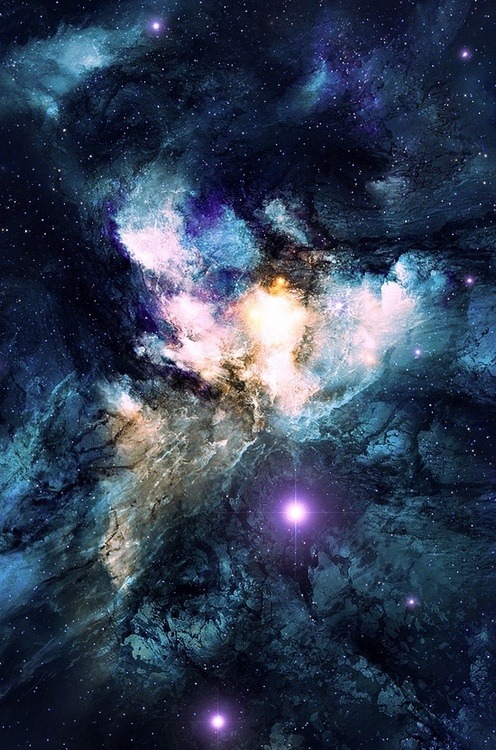

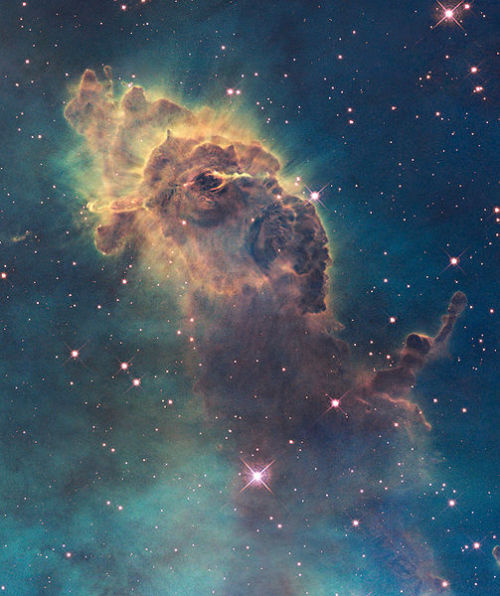
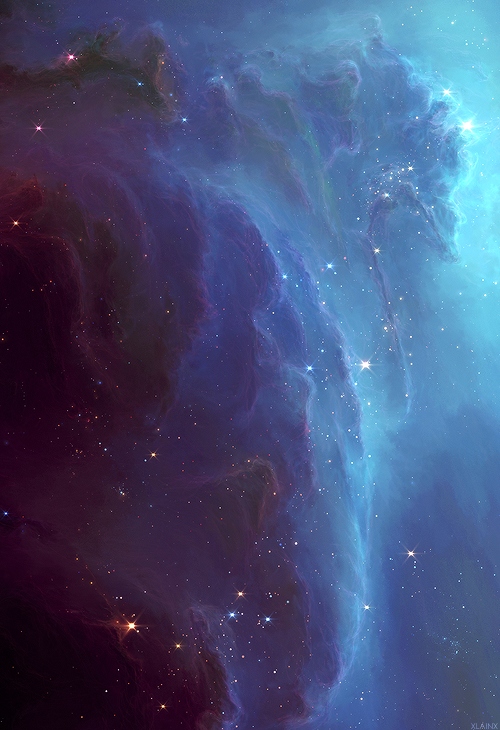
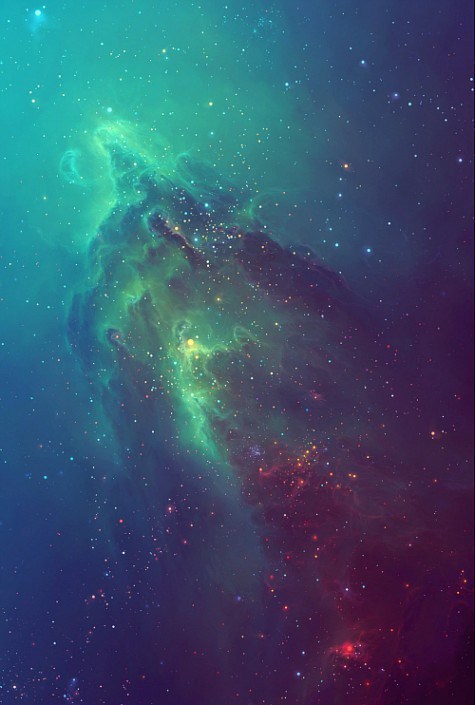
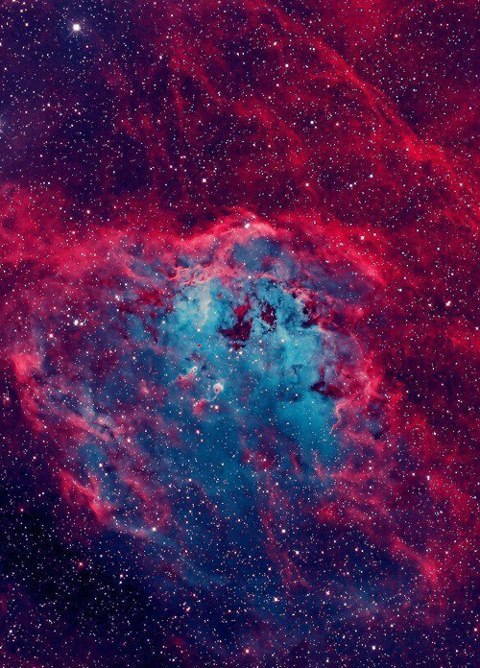
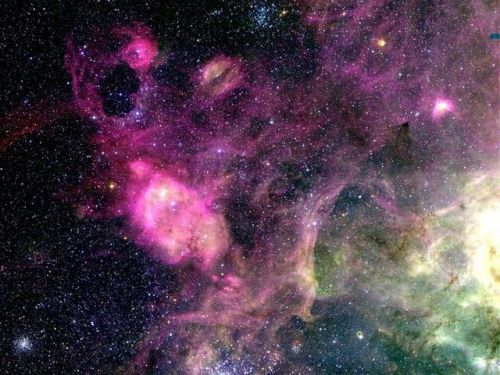




One of Fred’s shyer relatives breaks cover…
(via Black Hole Discovered Which Emits Brilliant Light)
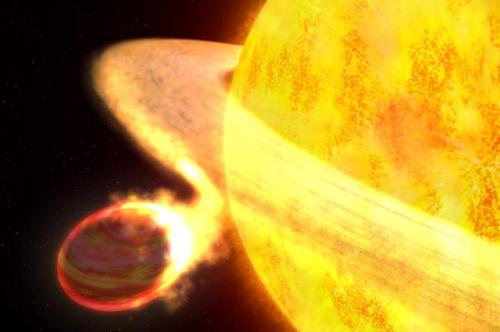
Most Amazing Exoplanets
The term ‘exoplanet’ applies to any planet outside of our solar system. At last count, we have identified 3,538.
Out of the thousands of planets we know about, some of them are incredibly bizarre compared to what we are used to seeing in our own solar system. Here are some exoplanets with very unique characteristics:
Kepler-78b
The most astounding fact about Kepler-78b is that it shouldn’t even exist, according to our current knowledge of planetary formation. It is extremely close to its star at only 550,000 miles (900,000 kilometers). As a comparison, Mercury only gets within 28.5 million miles (45.9 million kilometers) of the sun in the nearest point of orbit. With that proximity, it isn’t clear how the planet could have formed as the star was much larger when the planet formed. With its current distance, that would mean it formed inside the star, which is impossible as far as we know.
The planet itself is only slightly larger than Earth, though surface conditions are markedly different. The temperature on the surface is estimated to be 4300° F (2400° C), which is nearly nine times as hot as the temperature on Venus. Unfortunately for Kepler-78b, it is likely that the star’s gravitational pull will gradually bring the star closer and totally consume it in the next 3 billion years.
WASP-12b
While Kepler-78b still has about 3 billion more years before getting consumed by its star, the process is well underway for WASP-12b. This exoplanet is actively getting pulled apart by its parent star, much to the delight of astronomers who can watch the process unfold. So much material has been pulled away from the planet, it has been pulled into an oblong football shape. Astronomers have estimated that WASP-12b has about 10 million more years until it is completely pulled apart by the star.
The planet is described as a “hot Jupiter” as it is a gas planet that is about 40 percent larger than Jupiter. It is currently so close to its star that it only takes 1.1 Earth days for the planet to complete a full orbit. The star, WASP-12, is G-type main sequence star, just like our own sun. It is located about 800 lightyears away in the Auriga constellation.
TrES-2b
TrES-2b has been dubbed the “dark planet” because it does not reflect light. If we were able to view it directly, it would likely just look like a coal-black ball of gas. At 1800°F (1000°C) the planet is way too hot for clouds, which would help reflect the star’s light. The red tinges are areas of superheated gas. Other darker planets only reflect about 10% of the star’s light, but TrES-2b only reflects about 1%, making it the darkest planet ever discovered.
Why is TrES-2b so dark? Scientists aren’t quite sure. Right now, the best guess is that the majority of the planet’s composition is something like sodium or potassium which absorbs light. This dark world is located about 750 lightyears away in the Draco constellation.
HD 189773b
HD 189773b is pretty exciting. It is relatively close, at only 63 lightyears away. It is also the first planet to have its color determined and it turned out to be a pretty blue planet, just like Earth. Unlike Earth, however, HD 189773b is a gas giant with a temperature that reaches a sweltering 1800°F (1000°C). The weather gets more extreme, because intense pressure and temperature turns silicate particles in the atmosphere into glass, which then rains down. As if that doesn’t sound dangerous enough, the winds have been estimated to gust at 4,000 mph (7,000 km/h) which really whips those glass particles around.
55 Cancri e
55 Cancri e is twice the size of Earth but is nearly 8 times more massive and twice as dense. Last fall, researchers deduced that the mass of the planet was largely carbon. Due to the pressure and surface temperature of 4892°F (2700°C) it very well could have formed diamond. It is so close to its parent star it takes a mere 18 hours for the planet to complete a full orbit.
55 Cancri e is only about 40 light-years away from us in the Cancer constellation. The parent star is much more carbon than our own sun, so it might be too surprising that planet e is also carbon-rich. From there, it isn’t much of a stretch to assume that the other four known planets in the system would also have a high carbon content.
Because of these extreme conditions, astronomers don’t believe that 55 Cancri e has an atmosphere, making it a poor candidate for the possibility for life. However, it is close enough for astronomers to use it to test hypotheses about planetary formation.
PSR B1620-26b
Nicknamed “Methuselah,” PSR B1620-26b is the oldest known exoplanet. The planetary system formed approximately 12.7 billion years ago, when the Milky Way galaxy was in its infancy. It is located in the Scorpius constellation about 12,400 lightyears away.
Methuselah orbits binary stars and goes around them in a circumbinary orbit. As if Methuselah’s age isn’t interesting enough, the fact that it orbits two mismatched dead stars is quite unusual. One of the stars is a pulsar and the other is a white dwarf. Since Methuselah is found in a dense star cluster, astronomers initially thought it could be a star as well, and would be considered a brown dwarf. Measurements from the Hubble would confirm that Methuselah is a planet, and it remains the oldest one we’ve ever discovered.
TrES-4
Located 1,400 lightyears away in the Hercules constellation, TrES-4 is the largest exoplanet we have discovered so far. Though it is over 1.7 times the size of Jupiter, it has an extremely low density and is categorized as a “puffy” planet. The planet’s density is about the same as cork, which came as quite a shock. Astronomers attribute this to extreme heat of 2,300° F (1,260° C) due to is proximity to the star. At only 4.5 million miles (7.2 million kilometers) away from its sun, TrES-4 is able to complete an orbit in three Earth days.
Gliese 436 b
30 lightyears away in the constellation Leo, Gliese 436 b is a planet that is about as massive as Neptune. The planet also happens to be covered in burning ice - though the ice isn’t anything like what we’re used to. The extreme pressure of the planet forces the water to stay in solid form, even though the temperature exceeds 570° F (300° C). The outer layer of the solid water is superheated and comes off as vapor. Water has over 10 solid states, not including common ice.
In its present position, the water would not have been able to condense down into a solid, indicating that it migrated toward its sun after it formed.

Clouds Around V1331 Cyg Processing by Judy Schmidt
A complex nebular fountain-like structure that appears to originate from the star it was found around. The morphology of the nebular structure is quantified and discussed. Evidence for secular outflows is found from the optical data.[**]
WHY ARE PEOPLE NOT MORE EXCITED ABOUT SPACE. THERE IS A PLANET MADE COMPLETELY OUT OF DIAMONDS AND A HUGE ASS RAIN CLOUD FLOATING AROUND IN SPACE THAT IS SO FUCKING COOL.

Finally! A black hole that you can visit and survive!
Want a trip through a black hole without having to experience that pesky death? You’re in luck. There’s a special kind of black hole that’s not just survivable, but might get you to another time, or another universe.
Black holes are, traditionally, the scariest things in the universe. Huge, mysterious, inescapable, they wander through the universe and eat everything that gets too close. “Too close” is defined by their event horizon. This is the point at which they go dark, because it requires so much energy to escape them that not even light can get away. Since not even a photon can cross the barrier, no event that happens inside the horizon can ever have an effect on people outside.
Unless, something very odd was going on in the center of the black hole. Most black holes spin - this is something that was discovered way back in the 1960s by physicist Roy Kerr. It wasn’t exactly a shock, because most of the material that collapses into a black hole was already spinning. Sometimes, however, the spin on Kerr black holes goes a little above and beyond. Ever spun a glass of water, or soda bottle, so that the liquid inside swirls? Sometimes, if you spin it enough, the liquid actually parts, leaving a clear center and a spinning ring of water around it. The same kind of thing can happen in Kerr black holes. Instead of a singularity at the center, there’s a ring. And you can go through the open portion of that ring without touching the gravitational crush.
What’s on the other side? A lot of people have wondered. Some people think that these kind of black holes might be our key to time travel. They might be wormholes that let us hop between different points of the universe. Or they might be portals to different universes entirely. First we’ll have to find a few, and then we’ll need a few volunteers to go through. Preferably ones that haven’t seen Event Horizon.
Top Image: NASA/JPL-Caltech
Second Image: Dana Berry/NASA
Via NASA, Astrophysics Spectator, Discovery.
It gave Kit an annoyed look. “All right, so I’m ambivalent,” the Lone One said. “But isn’t ambivalence preferable to pure evil?” Kit considered that one for a moment. “See? You’re buying it already,” the Lone One said. “I was getting bored with absolute evil, anyway. I find that you can do lots more damage with ambivalence. … "People are eager to excuse it, though. Ambivalence is seen as a sign of maturity, wheras actually taking a stance on one side or another is easy to describe as simplistic. Or unsophisticated. Or juvenile."
-Wizard’s Holiday by Diane Duane
[yells to the heavens] THIS IS WHY I LOVE YA LIIIIIT
(via trailofdesire)
"All Our Myriad Worlds Lie Whole"
I realize my blog is a bit scattered, and mostly fandom based, and probably no small amount of ridiculous, but I’m going to share a fandom-related story with you lovely followers. ^___^ What follows is a ramble-y account of my love affair with the Young Wizards Series.
I went to NYC for a choir trip during my senior year of high school (which was a lot longer ago than I feel like it should be…), and while we were there we visited a few museums…as one does on field trips, you know? Well, the highlight of our trip, for me, was definitely getting to weigh myself on all the planets, because of the scene in High Wizardry by Diane Duane. And, yes, I checked to make sure the ladies’ didn’t lead to Mars…I was disappointed to find just toilets, I’ll admit. (Just kidding! …well, mostly.)
It’s weird to realize the impact a book series can have on you, the ways in which the written word can influence you. But I’ve been reading the Young Wizards Series for so long now (and that’s a story in and of itself, which I’ll probably share at some point), that in many, many ways I feel as if the characters know me as well as I know them. I sometimes imagine that maybe, somewhere out there, there’s a universe where literary characters are all real, and are reading about our universe’s fantastical adventures. If the universe is infinite, and if there are an infinite number of universes, then who’s to say there isn’t a world like that, after all? Maybe in some place, Nita and Kit are reading about my Ordeal, or my little sister running off all over the universe (she does run off to Europe on occasion…the rest of the galaxy isn’t such a far stretch, at that…).
But back to my point. I stood there, my hand on the same asteroid that Kit and Nita discuss as having come such a long way, and for me the moment was beautifully surreal. I don’t think any of my classmates had such a profound experience as I did on that trip, because I finally had arrived at a place that I had been reading about since I first got into fantasy, and it was a real place, not something unattainable like The Leaky Cauldron, or a magical wardrobe to Narnia.
It was real, and I could touch it.
I think that’s the real power of words, right there; the real magic in our universe. That one person’s words can leave such a lasting impression on another human being isremarkableandpowerful, and has the same chance of being misused as the magic I so dearly love to read about. Because as surely as words can heal and inform and touch, they can just as surely be used to hurt and twist and maim.
And I think, maybe, much of my fascination with words and languages comes from Diane Duane’s books, too, as surely as my fascination with that asteroid came from her books.
I’ve been called childish and ridiculous—been told that no one can take me seriously. I’ve been bullied, and was pushed off swing sets when I was little, and I’ve been called all sorts of unpleasant names like “nerd” and “loser”, among others, and been told I read too much (as if there is such a thing!). Maybe these things are why I empathized so totally with Nita, that very first time I read So You Want to be a Wizard, but she kind of became something of a guiding light to me. At first it was just that Nita had a profound impact on me, as a character with whom I shared so much, but later, as I grew older and continued to reread the series, it became less Nita, and more the entire feel of the series. There is so much good in this series, so many “words to live by” and the characters are so unconsciously good that to the reader it becomes second nature, too. Kit and Nita are like two bright standard bearers in a world that seems progressively darker, that more and more places emphasis on characters who do bad things for the right reasons, instead of character who do good things because that is the right reason.
I don’t even know if I can still call the impact these books had on me “subtle” because I feel like I’ve embraced the philosophies of the characters with every fiber of my being.
I’m going into anthropology, probably with an emphasis on archaeology, which is all about understanding other peoples, and in some cases preserving those cultures which are rapidly losing themselves to “modernization”. Maybe this makes me silly, but whenever I think about what I’ll be doing later in my life, working to understand and write about cultures unlike my own, I can’t help but also hear the words of the Oath in the back of my mind. I live by those words. I think they are perfect, and important, and I still read them out loud every time I get to that page, because whether or not they can make me a wizard, they are still a promise that I made to myself when I was eleven, and I intend to keep that promise—magic or not.
